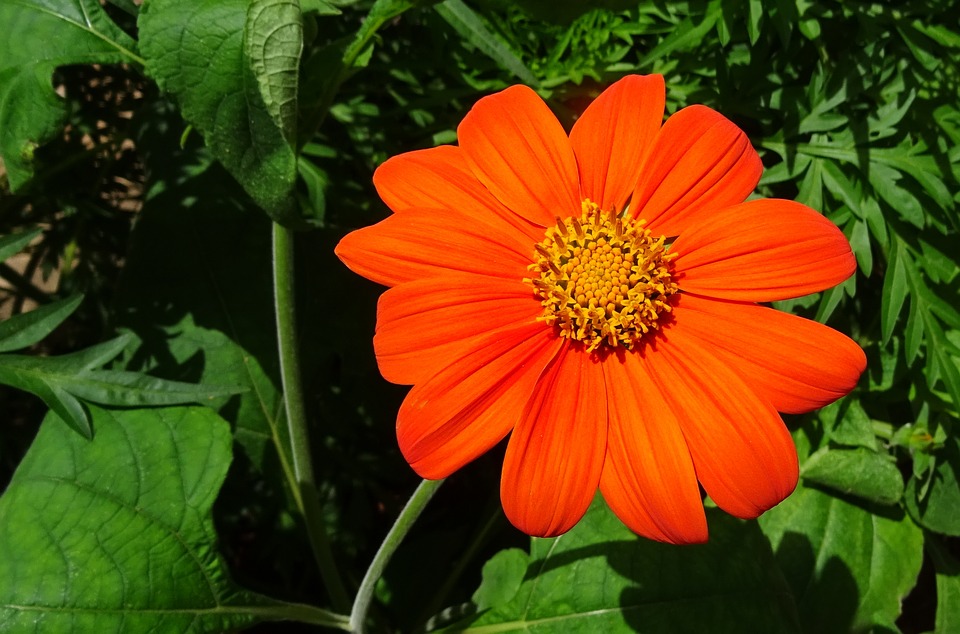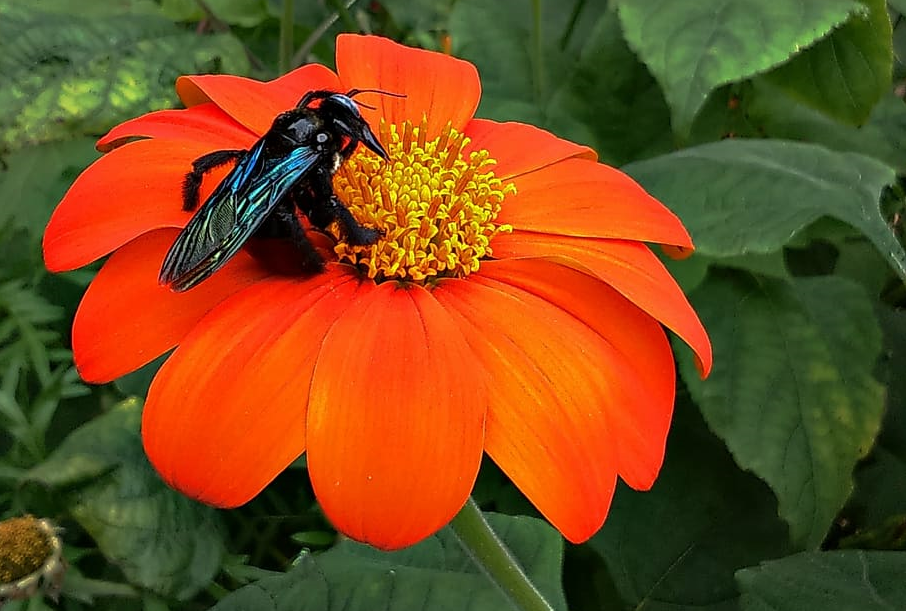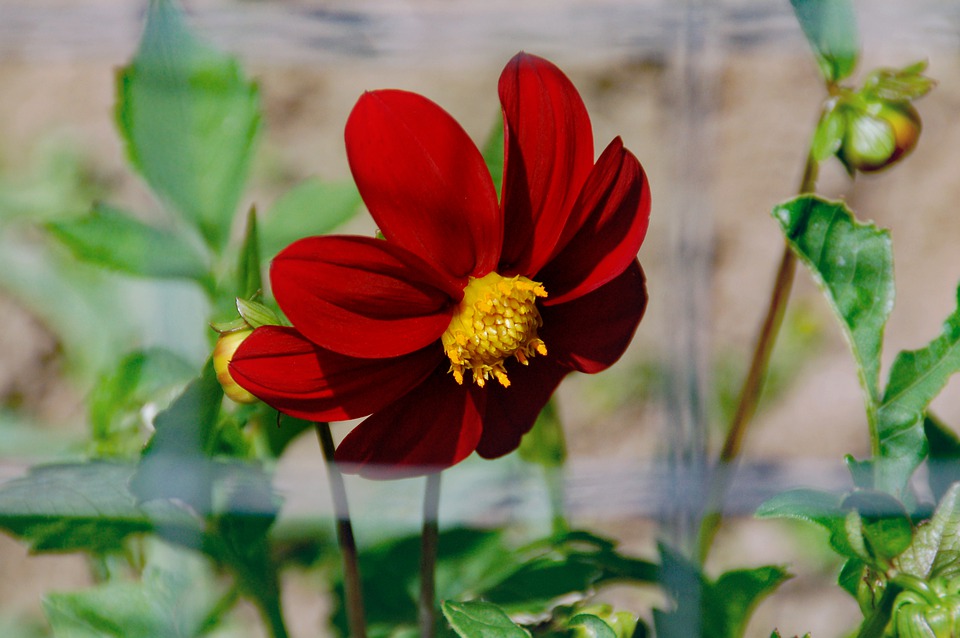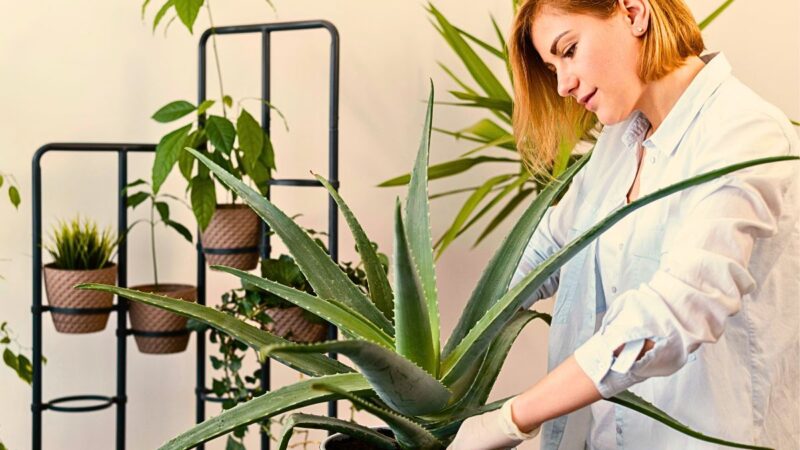How to Grow Mexican Sunflowers?

A Mexican sunflower plant is the best choice if you want to grow plants in your yard in order to make it look beautiful and colorful. The bright orange and red varieties render a fantastic look to the yard and are perfect to attract beautiful butterflies, bees, and other beneficial insects such as parasitic wasps.
Mexican sunflowers are beautiful plants that have red or orange flowers. The plants grow to shoulder-height, and they grow daisy-like blooms. People also refer to Mexican sunflower as the “Golder Flower of the Incas” as they grow showy bursts of daisy-like flowers.
The flowers in Mexican sunflower plant grow in mid-summer until frost. The flowers are solitary, and they are borne on fragile flower stems that are highly susceptible to being bent. The plants get varied bright red to orange flowers that surround yellow disk flowers.
The flowers of this plant are followed by grey to black seeds that are flattened triangular in shape. Mexican sunflower seeds are easy to collect and can be used to grow plants.
Here is an article with all you need to know regarding Mexican sunflower plants.
Sunflower Plant Profile
| Botanical Name | The botanical name of Mexican sunflower is Tithonia rotundifolia. |
| Common Name | Other names of this beautiful plant include tree marigold, Mexican sunflower, and Bolivian sunflower |
| Family | Mexican sunflowers belong to the Asteraceae family. |
| Mature Sunflower Size | Tithonia plants grow three to four to six feet tall and three to four feet wide. |
| Plant Type | Mexican sunflowers are annual plants. |
| Flowers | Daisy-like flowers with around 3 inches diameter. |
| Flower Color | Dark orange and yellow |
| Native Area | Mexico and Central America |
| Soil pH | Acidic; 5.8-6.5 |
Varieties of Mexican Sunflower Plant
The Mexican sunflowers have been growing since the 1950s, and the mainstay of these flowers is ‘Torch.’ For containers or smaller gardens, ‘Goldfinger’ and ‘Fiesta del Sol’ are dwarf varieties of the plant. They grow around two to three feet tall, which makes them suitable for smaller areas and containers.
Tips to Grow Mexican Sunflowers
Mexican sunflower plant is a perfect choice for beginners who want to grow beautiful and attractive plants at the flower border. The best part about these plants is that they are not fussy about soil, and you do not have to take any specific measure for sunflower plant care as they do not require much attention once they start growing.

Mexican sunflowers have nectar-rich stores that help in welcoming butterflies and other beneficial insects to the garden. They are perfect to meet the needs of pollinators. The tall blooms of this beautiful plant bring butterflies at the eye level, which makes it easy to enjoy the beauty of butterflies. A flower border for Mexican sunflower plants are perfect for vegetable gardens as they attract pollinators, which will help in enhancing your vegetable yields.
One packet of Mexican sunflowers is sufficient to get many vasefuls of flowers through the summer. You can plant them with other plants that grow in sunny sites like zinnias and cosmos. These plants are an amazing choice for cutting gardens, and they bloom again once you cut them. Now the question is how to grow Mexican sunflower plants?
Here are some tips to help you.
Soil
You can save the amendments of your soil for fussier plants like dahlias and roses, as Mexican sunflowers can easily grow with low nutrient soil content. However, good drainage is essential to prevent issues like root rot. Soil that is rocky or sandy is ideal for growing the plant as it is similar to the native soil condition in Mexico where this plant grows wild.
Light
In order to grow healthy Mexican sunflower plants, full sunlight is an essential factor. Keep in mind not to grow this plant in shady areas as it might not flop over, bloom, and might suffer from issues like fungal diseases.
Water
The best part about Mexican sunflowers is that they are drought tolerant throughout their entire life cycle, which makes them low maintenance plants. Tithonia plants can not tolerate wet soil. However, if there is more rain in your area, then opt for planting them in soil that has excellent drainage.
Fertilizer
Tithonia plants do not require any specific supplemental fertilizers. They grow just fine. In areas that have depleted soils, you can add flower fertilizer at the beginning of the season in order to encourage a quick start.
Temperature and Humidity
The hot temperature is ideal for Mexican sunflower plants. They love hot weather, even the ones with triple-digit temperatures. Cool weathers are not suitable for this plant. The right time to grow a Tithonia plant is when the temperature in the nighttime is in the 60’s. For healthy Tithonia plants, average humidity is the best. In order to prevent powdery mildew in humid areas, it is better to render extra spacing for the plants.
PRO TIP
Cover the Mexican sunflower plant if it is too cold outside, make sure you uncover it in the daylight.
Potting the Mexican Sunflower Plant
If you are planning to plant a Tithonia plant in a container, then do not plant more than one in a single container as they grow rapidly and are large in size. All you need to do is sow seeds directly in the container as it is quite difficult to transplant the large plants. Keep in mind to use a soilless potting mix with appropriate drainage.
Procedure of Propagating Mexican Sunflower Plant
It is easy to grow Tithonia plants directly from seed; however, if you can not find the seeds of your favorite variety, then you can also propagate the plant with the help of stem cuttings. All you need to do is take some stem pieces that are two to three inches in size and remove all the pairs of leaves except one. Then insert it in potting soil that is moist. You can expect their roots to develop in around ten days.

Growing Mexican Sunflower from Seeds
It is easy to grow Mexican sunflower plants from seeds. The small and triangular seeds of Tithonia germinate in warm and moist soil. Keep in mind to keep the soil moist until the plant grows from the seed.
Now the question is what month to plant sunflowers or which is the ideal time to grow sunflowers? You can sow the Tithonia seeds outdoors in the same seasons when you plant tomatoes, which means two weeks after the passing of the last frost.
The soil should have a temperature of 60 degrees Fahrenheit. In short summer areas, start to sow the seeds, six weeks prior to the last frost in order to assure the plants get sufficient time to grow and bloom before fall.
Growing in Containers
If you want to grow Mexican sunflower plants in small pots, then you can grow the dwarf varieties of these plants. You can easily grow them in the balcony, deck, or patio using small containers or pots. All you need to do is plant the Tithonia in the middle of the pot. You can also add trailing plants like portulaca or million bells, as they also appreciate dry conditions and full sun. It will help in enhancing the beauty of your small garden.
Pruning
It is not necessary to prune the Mexican sunflower; however, it can help in controlling the lanky plants or to bound the overgrown plants. Keep in mind that you might need to sacrifice some blooms for the purpose of pruning. For the purpose of pruning, cut off the one-third part from the top of the plant, when it experiences a break-in blooming.
Disease/Pests
The Mexican sunflower plants do not face any serious pest issues. In addition to this, they are also not favored by deer. However, in rainy weather, slugs and snails can harm the Mexican sunflower plants. As soon as you see snails, caterpillars, or slugs, gather them using cardboard and then put them in another area. In addition to this, cut away any grub infested leave in order to stop the issue from spreading to the other plants.
Mexican sunflowers might take more space as compared to the single-headed iconic sunflower plants; however, they look magnificent and wild, which makes them the perfect choice to add beauty to your garden. They attract butterflies and look perfect when arranged in vases. They are easy to grow and can also be kept in containers and large pots, so you can place them wherever you want.
Mexican Sunflowers VS. Sunflowers
Mexican sunflowers & common sunflowers, aka Helianthus annuus, both are long and love the sunlight. Both are annual flowers that can withstand poor and dry soils. Usually, common sunflowers have big blooms that can grow up to 12 inches, and the seeds are edible.







